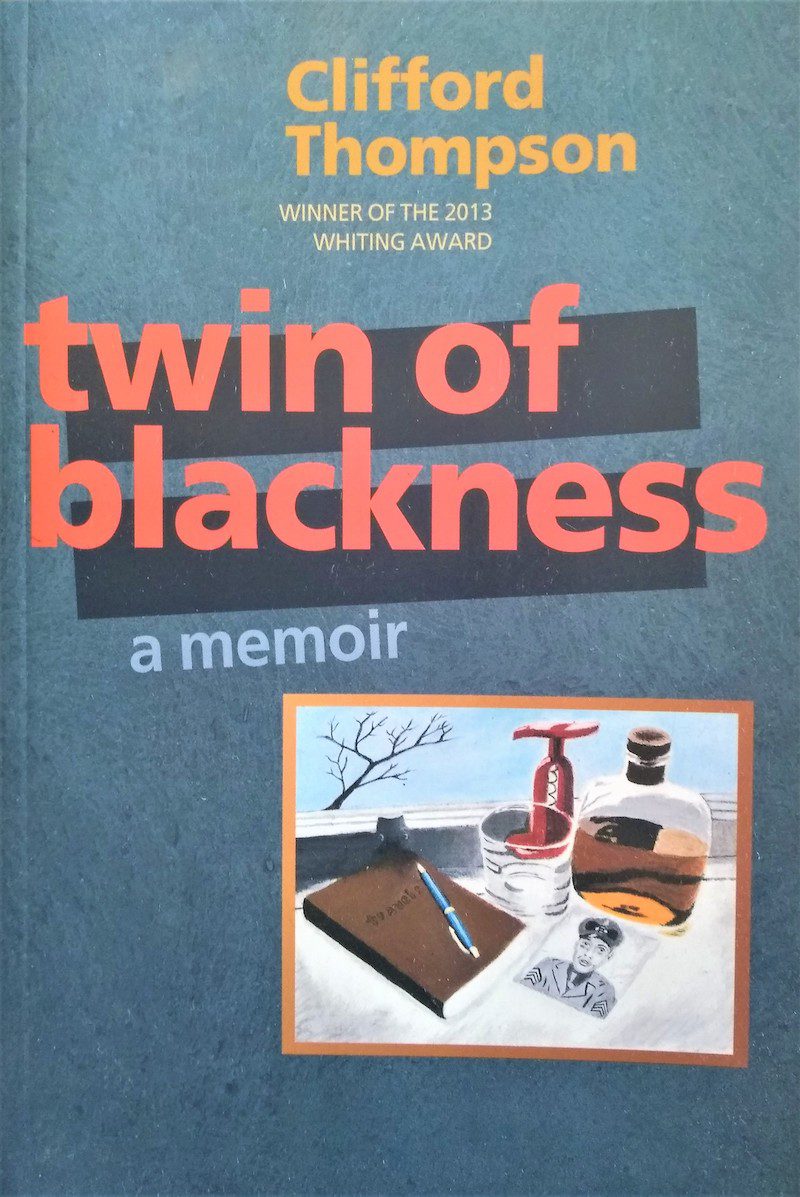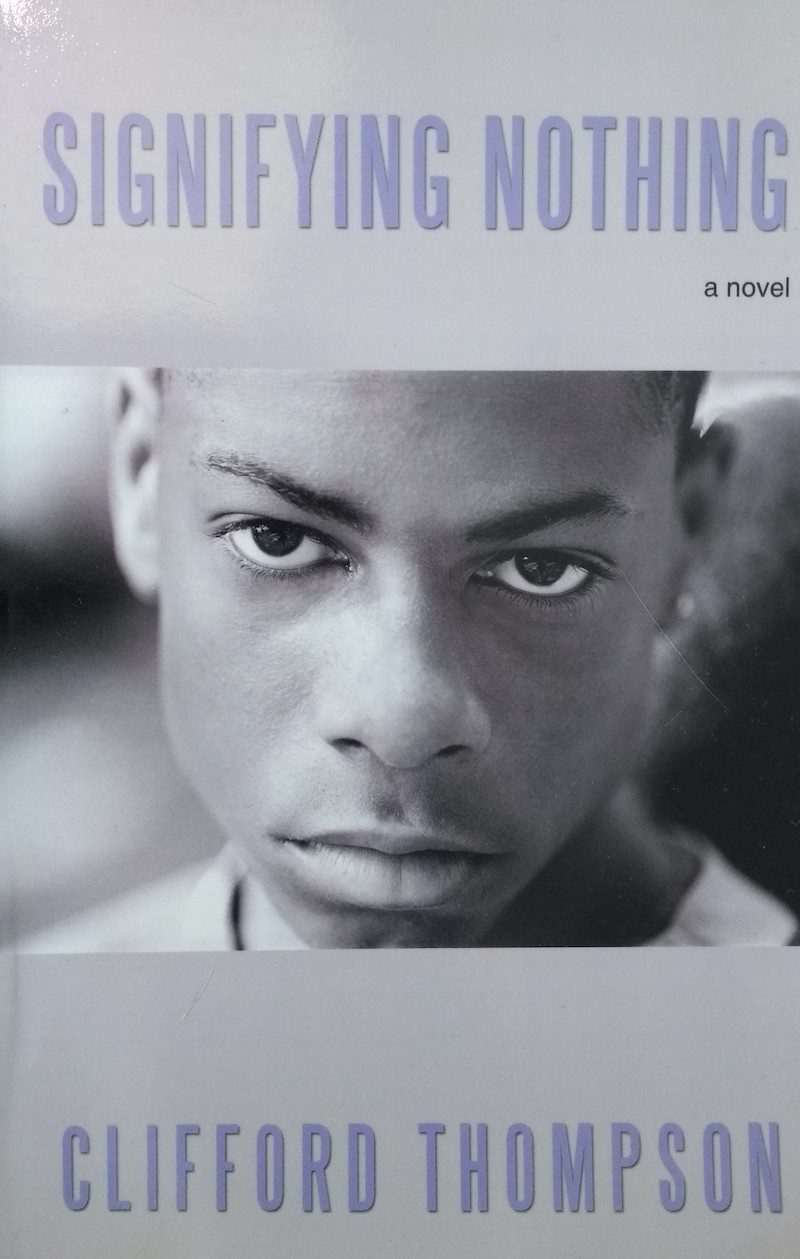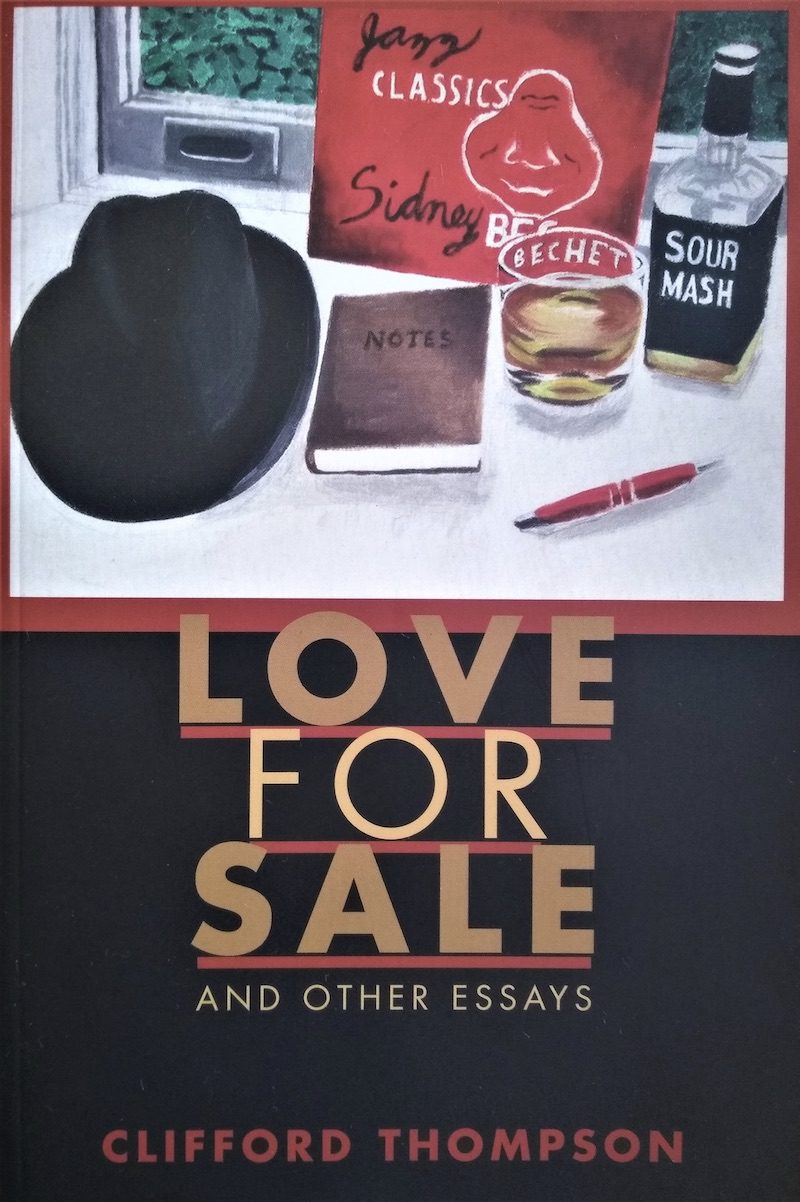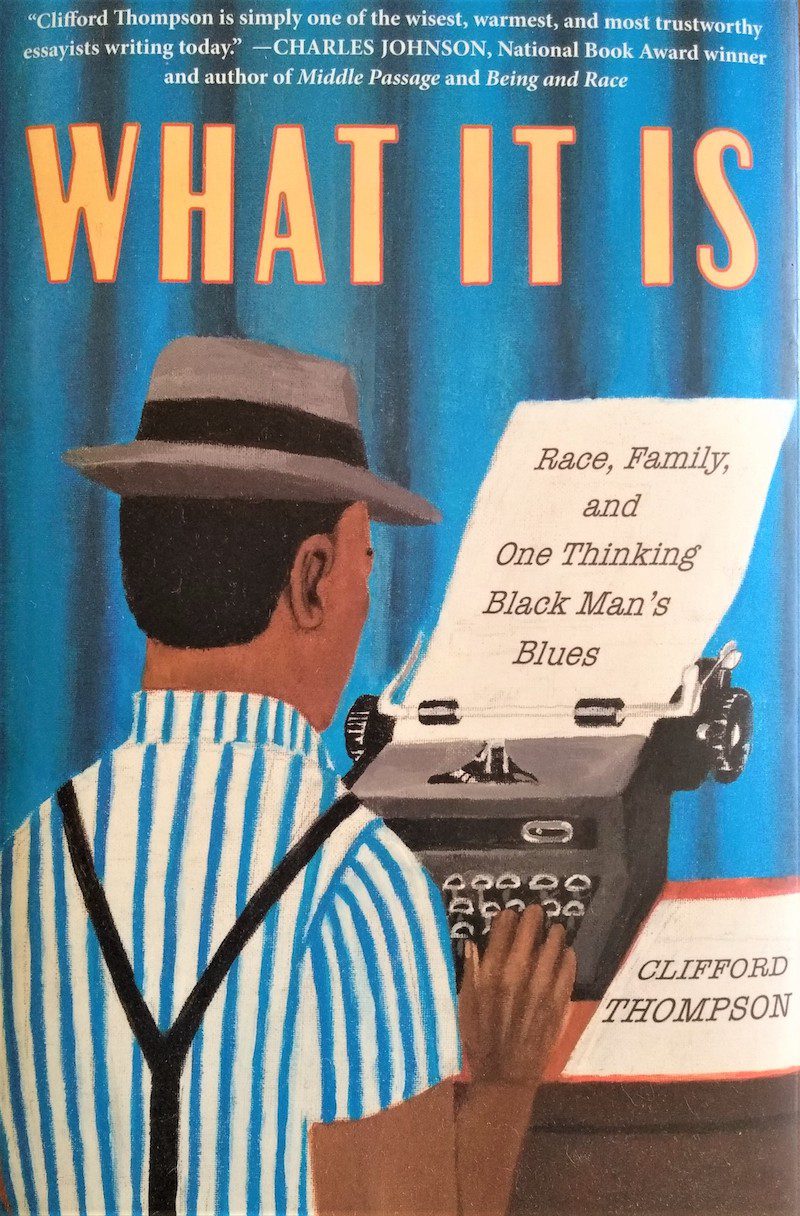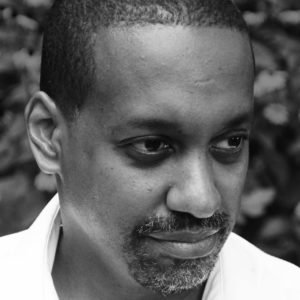
I first met Clifford Thompson in November 2015 when we read together from our new works of creative nonfiction at the Miami Book Fair. I was drawn at once to his approachability as a person and his thoughtful candor as a memoirist. In the next iteration of my Graduate Memoir Seminar, I taught Cliff’s memoir, Twin of Blackness, and as predicted, my students also loved the book. In fact, they were the ones who posed the first questions about it, which I forwarded to Cliff and which he was gracious enough to answer.
So, by way of a twist on our usual interview format, this one starts with a flashback to Cliff’s first responses to my MFA students in 2018, and then resumes with questions from our current conversation in 2020. We’re in conversation here about art-making across genres, art-making as sense-making, and art-making as activism.
***
The Rumpus: My memoir class was wondering if you could share a bit about your decision to write a memoir in the first place, how the process of writing Twin of Blackness was different from the process of writing your previous book of essays, Love for Sale, and your novel, Signifying Nothing, and about your decision to pair each chapter in this memoir with an “interlude.”
Clifford Thompson: Back in 2010 I had the idea that the story of my attempt to find my place in this wonderful, rich nightmare called America might be useful to some people. I realized that that story is intimately tied up with my love of various art forms—from reading Peanuts, listening to the Jackson 5, and trying to draw comic strips as a kid to reading Baldwin, listening to Charlie Parker, and publishing essays as an adult—and so I wanted to write a book that would encompass all of that.
I drew on essays I had already published for parts of the book (parts about my father, for example). But the first thing I wrote specifically for the book was inspired by Hemingway. You may recall that I was knocked out as a seventeen-year-old by the matter-of-fact opening of The Sun Also Rises, which was different from so many first lines I had read: “Robert Cohn was once middleweight boxing champion of Princeton.” So, I deliberately set out to write a first line as simple and, I hoped, arresting as that. What I came up with: “My Uncle Brock was missing his front teeth and quite a few others besides.” Later I made the very first thing in the book the Prelude (“I have come to think of blackness as my twin…”), which was originally part of the main text.
Speaking of the Prelude and Interludes: after I wrote the first draft, I started to figure out what the themes of the different chapters would be, and some things had to go. But it seemed to me that some parts, even if they didn’t exactly fit in with the main story, could serve as connective tissue between chapters, commenting on what had passed or what was to come. For example, the Interlude about The Godfather is really about how I felt after my father’s death, which had been discussed in the previous chapter. Similarly, after the chapter that ends, “In my mind, I was already a writer,” I put the Interlude that is ostensibly about a relay race but is really about the writing life.
Rumpus: Last we spoke, I doubt either of us could have imagined the present moment in our zeitgeist—three weeks before the 2020 presidential election and seven months’ deep in a global pandemic. So, let me begin by asking how you are, as a person, of course, and also as an artist. How are you coping, and how does art help you cope?
I know you as a fiction writer, a creative nonfiction writer, and also a painter. I want to talk to you about all of those sites of creativity in this interview. Right now, I wonder how the various arts you practice are serving you? Is art-making a way of reckoning, a site of refuge, a means of activism—or perhaps all or none of the above?
Thompson: I love your question about whether art-making is a way of reckoning, a refuge, a means of activism, or all three, and you are wise to include “all three,” because that is my answer. Groups including the WHO are working on a vaccine for Covid, but there is no vaccine for the erosion of mental health occurring in this era. (I started to write “in times like these,” but who alive today has ever seen times like these before?)
I don’t know where I would be right now without creative outlets. I know people who have creative outlets and are still struggling, but for me, being able to write and paint has saved me—it has been my vaccine. I have been approached by editors of publications including Scoundrel Time, Voice Male, and Statorec: Statement of Record to write short pieces that express my thoughts and feelings about the current moment, and I am grateful for that, because those assignments have helped me to clarify my thinking. And painting takes me to a different plane entirely, which is a godsend. I paint in the evenings in the same room where my wife watches documentaries. It’s an arrangement we both love.
Rumpus: Two linked questions here: you write about your relationship with painting and writing both in Twin of Blackness, but I’m wondering how you’d characterize the origin of each artistic impulse. I know a lot of writers who say things like, “I’d paint you a picture, but words are all I’ve got.” Actually, I’m one of those writers who says things like that because I’ve always felt that words were my only possible artistic medium. Would you say you are a painter and a writer for the same reasons, or does each creative practice satisfy something different/separate for you?
I’m also curious to know how the process of creating your new graphic novel differed (both was different logistically but perhaps also felt different) from writing a book without images or painting images without words.
Thompson: My very first creative efforts involved words and pictures together. At age seven or so I fell in love with Charles M. Schulz’s comic strip Peanuts, whose main character is Charlie Brown. It wasn’t long before I started writing and drawing my own terrible rip-off version, which was called “Jarome” (until I learned to spell “Jerome”). A few years later, I became enamored of the Marvel Comics superheroes created by Stan Lee, heroes who had in common with Charlie Brown that they were losers, at least inside. If Charlie Brown had superpowers, he would be Spider-Man, more or less. When I started making up and drawing superheroes, they were inspired by the trembling-on-the-inside Marvel heroes. So, I was attracted, early on, to the notion of the young person who doesn’t quite fit in, a figure that transcended genre: at thirteen I encountered him again in the novel The Catcher in the Rye, and I found him yet again, when I was seventeen, in the film The Graduate. And I find that a work in one genre can influence work in another. It wasn’t long after watching The Graduate that I started thinking about writing prose. Over the years I made my way from fiction to (mostly) nonfiction, though I still write fiction.
So, at that point, in my late teens, the writing and drawing parted ways. I identified primarily as a writer; I still do. But about a dozen years ago, when I was in my mid-forties, the visual side came roaring back, and I started painting, which I had never done very much. I paint in acrylics, which I find a lot easier to use than oil. I guess if I had to say what I get out of each form, it would be that writing is an attempt to use words to make sense of experience, and with painting I try to capture things that appeal to me, that I find cool, for reasons that are beyond words. Why do I love Matisse’s work? I can’t adequately say, but I do, and I try for something of that same effect.
But then comes the trans-genre thing again. A little over a year ago I was having drinks in my neighborhood with a good friend and said, “You know, part of me would like to make a film. Except I know nothing about it, and I’m too old to start.” My friend said, “I can see that. You’re a writer, and you do visual work.” And something in his words sparked this idea: that I would make a film… except in the form of a graphic novel. I read up a little on how film stories are structured, and with that in mind, last spring I wrote the script for Big Man and the Little Men [forthcoming from Other Press in fall of 2022]. I ordered a drafting table, and now I spend most evenings drawing the story.
I will say that drawing is different than painting. Painting, for me, is a process of making mistakes until I get it right, or as close to right as I can. I use colors to represent gradations of light; one thing can blur into another. That works less well in drawing. When you’re penciling, you can sort of fudge where the border of a face or an object is, where the line is, but at a certain point you have to ink it. At that point, the border is here. Mistakes don’t cut it; for the most part, you get one shot. I think the equivalent would be a film in which the director went with the first take in every scene.
But as much of a struggle as it is to illustrate my graphic novel, I love it. And I like to think that, even with my limitations, there is something in my drawing that is unique to me.
To try to answer the last part of your question: part of what I love about creating a graphic novel is the way that words and images back each other up. They can be like two jazz musicians trading fours: one carries the tune for a while, then the other. (Naturally, I had to work in a jazz analogy.) Some pages are packed with words; some have only images. One panel with words can be followed by one with only a facial expression, the second panel completing the statement made by the first.
Rumpus: How would you characterize the enduring theme(s) that run(s) through your work—fiction, essay, memoir, painting, et al.? Who are you writing/painting for? Is there an imagined or ideal reader/viewer on the other side of these texts? There might also be an embedded question here about the relationship between art-making and activism or art-making and consciousness-raising. In high school, I remember starring in my copy of Walden Thoreau’s bold claim: “It is never too late to give up our prejudices.” Do you think the arts can help us do so, and if so, is this a conscious aim of the art you make?
Thompson: Certainly family is a theme that runs through a lot of my work, both books and essays. I refer a lot both to the family that raised me and the one I helped to raise. Many years ago someone asked me how it was possible to be a writer and have a family. My response is that if it weren’t for my family, I don’t know what I would write about. I don’t mean that I write explicitly about my family all the time; rather, I mean that having children has given me an appreciation for the preciousness and fragility of life and an appreciation for what everyone goes through. The adults you deal with, even the most aggravating ones, were little kids once, and the almost unbearably sad truth is that no child can escape hurt. When you think of it that way, you have a little more sympathy for people.
Then there’s race. It could almost be said that much of my work is an attempt to solve a puzzle. I was raised to believe that prejudice, all prejudice, is wrong. Because of the way I was raised, and because of my temperament, I don’t have it in me to prejudge people, any people, based on skin color. So the puzzle is how to square that view—which I will hold until my dying day—with the sheer enormity of what has been done to Black people in this country, what continues to be done.
I don’t know that I am trying to oppose prejudice in my writing so much as I am trying to explain and make a case for my own views, and to square my views with reality. Maybe the two amount to the same thing.
I’m kind of embarrassed to say that I don’t know whom I’m writing for. Myself, I guess. The other day I was teaching Joan Didion’s wonderful essay “Goodbye to All That,” and I called the class’s attention to a sentence that begins, “But most particularly I want to explain to you, and in the process perhaps to myself…” I don’t think the essayist’s job has ever been summed up more eloquently.
Rumpus: Your temperament is indeed something that comes through in your work—a gentleness and openness to others that isn’t rooted in suspicion, your willingness to meet each person in good faith. In fact, your ethos in Twin of Blackness and in your newest book, What It Is: Race, Family, and One Thinking Man’s Blues—which I am just reading now!—has been described by reviewers as “subtle,” “graceful,” “refreshing,” and “trustworthy.” I agree! Here’s what I’m wondering:
One time a student who had taken a couple of different classes with me asked: “You don’t really teach angry writers, do you?”
I was caught off guard by the question. “Who says the writers we’re reading aren’t angry?” I asked. “Is there only one way to express anger?”
I don’t remember exactly how the conversation resolved because I was still mulling on the question when it did. I have a hunch my student may have been asking me, in a roundabout way, why I wasn’t visibly, palpably angrier? I seemed to have some kind of social consciousness, and yet, maybe they thought I smiled too much or was too soft-spoken to fully convey my convictions?
If you’re willing, I’d really benefit from hearing about the role does anger plays in your motivation to make art and in your creative process. What does anger mean to you—as an artist—as a father of biracial daughters—as a Black man here and now, being in and bearing witness to this America?
Thompson: Julie, those are really good questions, the proof being that I really had to think about the answers, really had to ask myself the questions. It’s good you ask about anger, since my work apparently doesn’t have enough of it to suit some people. The best way to start talking about it may be to tell a story that has nothing to do with race.
One day when I was twelve, I was walking in my neighborhood with a friend, and my friend wanted to go down an alley. I said I thought there was a pretty mean dog in that alley, but my friend dismissed my fears, and so we went. Well, that dog bit that crap out of me. Later, I heard my supposed friend laugh while telling the story to someone else. I was angry at my friend—and I let him know it—but it never occurred to me to be angry at the dog.
That’s kind of how I feel about racism. I mean, yes, I deplore racism and America’s racist past—I’ve never met a Black person who doesn’t. Do I really need to say that? But in this analogy, racists are the dog. I was not angry at the dog for biting me, because that’s what dogs do. Being angry at a dog is a waste of time, and time is precious. I feel the same about racism. Working against racism is what we need to do, it is vitally important, but being angry about its existence is a waste of time. If a guy doesn’t want me living next-door to him because I have brown skin and kinky hair, I cannot spend precious moments of my life hating that guy. I can pity him, maybe.
Now: the people I do feel anger toward are those who either are willfully blind to racism, or feel indifference toward it (I wrote about indifference in What It Is), or deny it, or would rather jump off the George Washington Bridge than admit that they are in any way complicit in it or beneficiaries of it. These are the people I’ve heard say, “I never made anybody sit at the back of the bus.” No, you didn’t, but you are a beneficiary, directly or indirectly, of the system that did make people sit at the back of the bus. Sometimes the benefits can be measured in actual dollars and cents. There are people today who have trust funds because their ancestors got filthy rich by insuring property in the South—property that included my ancestors. I’m not asking anyone to feel guilty; like anger, guilt is often a waste of time. All I want is acknowledgment.
The good thing about being angry at those people is that, sometimes, your arguments can persuade them. I have no interest in trying to win over the grand dragon of the Ku Klux Klan, but maybe I can make other people see where I’m coming from. That is what I tried to do in What It Is. Perhaps my favorite review of the book called it “coolly delivered but impassioned.” I much prefer that to “not angry enough.”
About my being a father of biracial daughters… some of my anger is reserved for people, and they can be any shade, who think there is something weird or shameful or wrong about being, or having, a biracial child. People who think that way can go… well, use your imagination.
***
Photograph of Clifford Thompson by Kate Slininger.

